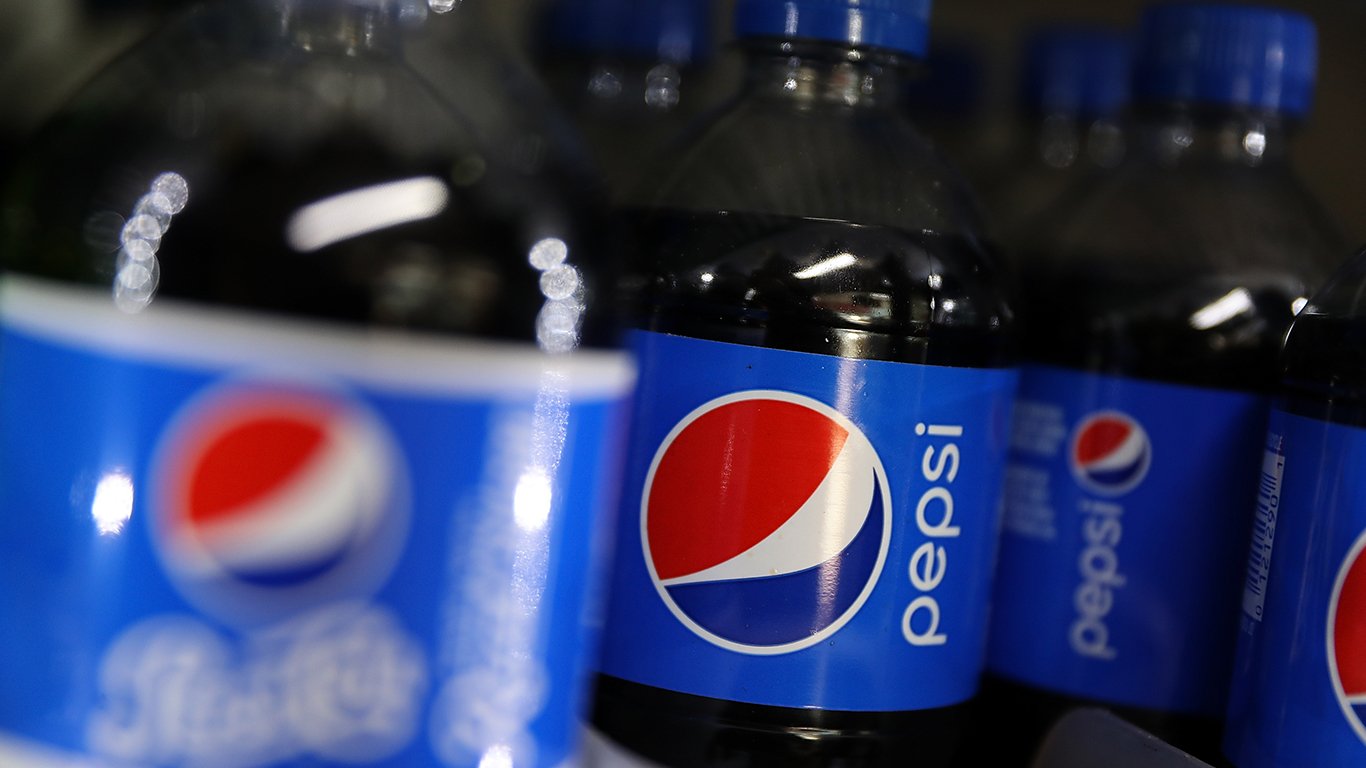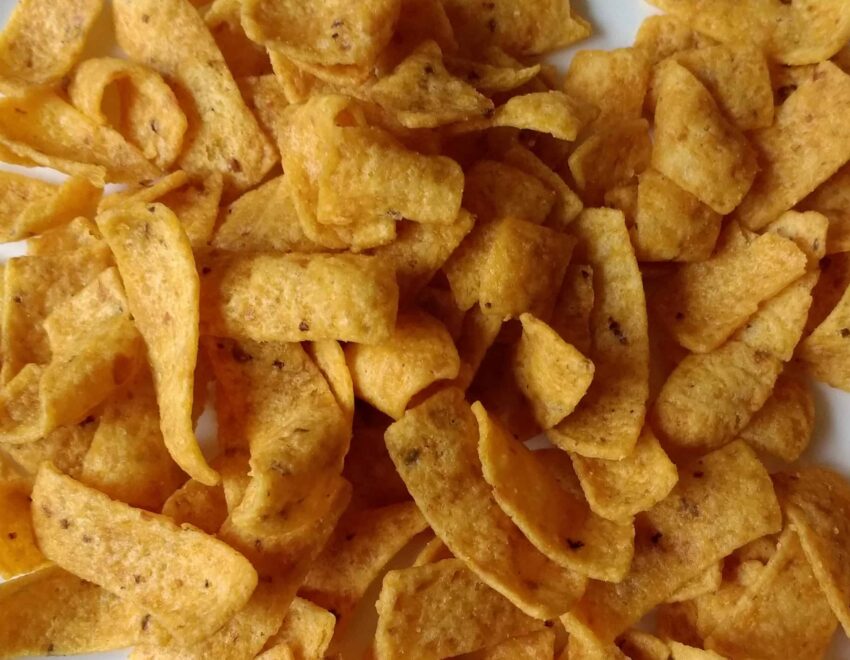Frito-Lay chips have been a delicious part of school lunches, backyard barbeques, and work lunch breaks for nearly a century, even as other snack foods are discontinued. While the brand has been a constant, the price has not. Here’s the back story of these chips and how the cash-per-crunch has changed over the years.
Key Points
-
Prices have gone up while portion sizes go down, but Frito-Lay chips have become a quintessential American food that’s here to stay.
-
Are you ahead, or behind on retirement? SmartAsset’s free tool can match you with a financial advisor in minutes to help you answer that today. Each advisor has been carefully vetted, and must act in your best interests. Don’t waste another minute; get started by clicking here.(Sponsor)
Depression-Era Collaboration
Though potato chips go back to the 1850s, Frito-Lay’s story starts in 1932 in San Antonio. That year, Charles E. Doolin bought the recipe and equipment for $100 and started making the chips in his mother’s kitchen. He called them Fritos and sold them for a nickel—a common price at the time for candy bars or Coca-Cola. The chips were sold in small wax-paper bags, often directly out of glass jars at soda fountains and general stores. Fritos were seen as an affordable treat—simple, salty, and accessible during the Great Depression.
Around the same time, Herman Lay was selling potato chips throughout the South under the name H.W. Lay & Company. By 1961, the two joined forces, forming Frito-Lay and setting the foundation for one of the largest snack companies in the world. Then, in 1965, the company merged with PepsiCo to form PepsiCo Inc. Today, brands like Lay’s, Doritos, Cheetos, Ruffles, and Fritos are all part of the Frito-Lay division of PepsiCo.
Marketing Muscle

What began as regional operations turned into a nationwide phenomenon, thanks in part to a keen sense of timing, a growing appetite for convenience, and the rise of television.
Frito-Lay understood early on that snack food was about more than taste—it was about identity. The company leaned hard into marketing, sponsoring radio and TV programs, creating characters like the Frito Bandito, and introducing memorable taglines like “betcha can’t eat just one.”
By the 1980s and 1990s, they’d shifted to star power, launching Super Bowl commercials and national campaigns featuring celebrities. More recently, they’ve adapted again—using nostalgia, multicultural appeal, and limited-edition flavors to reach younger and more diverse audiences. Social media plays a major role, especially with campaigns that invite fans to vote on new flavors or post about their favorite varieties.
How Chips Changed the Way America Eats

Beyond branding, Frito-Lay helped shape how Americans think about snacks. Smaller, single-serve bags made it easy to toss chips into lunchboxes. Giant family-size bags became a fixture at parties and tailgates. Regional flavors and limited-time releases gave consumers something new to chase. And with Lay’s sold under different names globally—Walkers in the UK, Sabritas in Mexico—the brand became a cultural chameleon.
Chips evolved from a treat into a symbol: something familiar, customizable, and proudly casual. Whether you prefer plain or Flamin’ Hot, chances are you’ve crunched a Frito-Lay chip in a moment that felt unmistakably American.
What’s Actually in the Bag?

Originally, Lay’s potato chips were made with just three ingredients: potatoes, oil, and salt. Over the decades, the oils used changed to match health trends and regulatory shifts. Hydrogenated oils gave way to sunflower, canola, and corn oils by the early 2000s, responding to concerns about trans fats.
In recent years, Frito-Lay has removed artificial flavors and colors from many products, particularly following FDA regulations. At the same time, the company has introduced baked, multigrain, and protein-enriched snacks to appeal to health-conscious consumers.
Still, recipe changes haven’t always gone over well. In some cases, fans noticed a drop in quality—less real cheese, for example, and more “natural flavor” substitutes. These changes often stem from rising ingredient costs and evolving consumer demands. Healthier? Sometimes. Cheaper to make? Usually.
The Curious Case of Shrinking Chips

If you’ve ever opened a bag and thought, “Wasn’t this bigger last year?”—you’re not imagining things. Over the last two decades, Frito-Lay has quietly reduced serving sizes while keeping prices the same or even higher. It’s a trend called shrinkflation, and chips are one of its most noticeable victims.
Bags that once held 2⅝ ounces now hold 2¼. “Family size” bags frequently contain less than 12 ounces, even as the label stays the same. Sometimes, companies even change the product’s barcode to make the shrink less obvious on store shelves.
To offset backlash, Frito-Lay occasionally releases “bonus” or “party size” packs—usually during major holidays or promotional events. These temporary increases help distract from the broader pattern of shrinkage, which is driven by rising production costs and consumer price sensitivity.
A Look at Chip Prices Through the Decades

Here’s how the cost of a standard bag of Frito-Lay chips has changed over the last 50 years.
1970s: A typical bag cost about 25 to 35 cents. Vending machine prices stayed under 50 cents. Frito-Lay expanded product lines, introducing flavors like sour cream and onion, and began national distribution of Ruffles.
1980s: Prices climbed to around 99 cents for a standard bag. New packaging and single-serving sizes became more common. The era also saw the debut of baked chips and seasoned varieties of Doritos, reflecting growing interest in novelty flavors.
1990s: A bag of chips typically cost $1.29 to $1.49. Fat-free “WOW” chips, made with olestra, launched to much fanfare—and backlash. Larger party-size bags sold for up to $3, while standard packs held steady in size and price through most of the decade.
2000s: The average 4-ounce bag cost between 99 cents and $1.29, but portions began to shrink. Jumbo bags reached $2.99 or more. Health-conscious consumers drove demand for new lines with multigrain, reduced-fat, or organic ingredients.
2010s: Shrinkflation picked up speed. Family-size bags priced at $2.99 often weighed under 12 ounces. Single-serve bags shrank below a full ounce, while prices continued to rise. Some promotions temporarily reversed the trend, but the overall direction was clear: less chip, more dollar.
2020s: As of 2025, a standard 7-ounce bag sells for $4.19 to $4.29—roughly 60 cents per ounce. Party-size bags (usually 12.5 ounces) range from $4.98 to $5.29. Multipacks and mini-bags are everywhere, often marketed for lunchboxes or portion control. Prices have consistently outpaced inflation, driven by supply chain challenges, labor costs, and consistent demand.
Riding the Wave of Trends—and Backlash

Frito-Lay has a track record of adapting quickly to changing trends. When artificial dyes fell out of favor, they phased them out ahead of FDA deadlines. When high-protein and gluten-free snacks surged in popularity, the company rolled out new options. Lawsuits, such as a 2019 case in India over genetically modified potatoes, haven’t slowed its momentum.
Despite health-focused branding, some critics argue the company’s “better-for-you” products don’t go far enough. Many options labeled as healthier still contain high levels of salt and fat. Even so, the evolution toward “Simply,” “Baked,” or high-protein variants reflects Frito-Lay’s instinct for reading the room—and the grocery aisle.
The Frito-Lay Empire Today

Today, as a division of PepsiCo, Frito-Lay is the largest snack food company in the United States, accounting for about 60% of the American chip market. If it crunches, they probably own it.
Here’s a list of major Frito-Lay brands currently owned and distributed by PepsiCo under its snack food division in the U.S. (and many worldwide):
Core Chip & Snack Brands
-
Lay’s – Classic potato chips (including sub-brands like Lay’s Kettle Cooked)
-
Ruffles – Ridged potato chips
-
Doritos – Flavored tortilla chips
-
Tostitos – Tortilla chips and dips
-
Cheetos – Cheese-flavored snacks
-
Fritos – Corn chips
-
Santitas – Value-brand tortilla chips
Puffed & Extruded Snacks
-
Smartfood – Flavored popcorn (like white cheddar)
-
Chester’s – Budget line (includes puffed corn snacks like hot fries)
-
Munchies – Snack mix brand (often includes Doritos, SunChips, etc.)
-
Sabritas – Popular Latin American snack brand (often found in U.S. as well)
Health-Oriented & Baked Snacks
-
Baked Lay’s, Baked Cheetos, etc. – Lower-fat alternatives
-
SunChips – Multigrain snack chips
-
Simply – A cleaner-label line using simpler ingredients (e.g., Simply Cheetos, Simply Lay’s)
Pretzels, Crackers, and Mixes
-
Rold Gold – Pretzels
-
Stacy’s – Pita chips
-
Gamesa – Cookies and crackers (mostly Mexican/Latino markets)
-
Matador – Meat snacks (beef jerky, etc., under a Frito-Lay partnership)
Regional and International Brands (U.S. availability varies)
-
Sabritones – Chili and lime puffed wheat snacks
-
Crujitos, Poffets, Turbos Flamas – Latin-inspired snack lines
-
Walkers (UK), Smith’s (Australia), Hostess (Canada chips) – Owned globally by PepsiCo under the Frito-Lay umbrella
Conclusion: A Snack That Reflects a Nation

From 5-cent corn chips during the Depression to $5 bags in the digital age, Frito-Lay’s journey mirrors the broader American experience. It’s a story of invention, marketing genius, shifting health priorities, and the quiet impact of inflation. Every adjustment in size, flavor, or price tells us something about how consumers—and the country—have changed.
As America’s tastes evolve, so do its snacks. The next time you tear open a bag of Lay’s or Doritos, you’re not just tasting potatoes or corn. You’re tasting history, economics, and a very specific kind of cultural moment. And… “betcha can’t eat just one!”
The post Crunching the Numbers: The Cost of Frito-Lay Chips Through the Years appeared first on 24/7 Wall St..
Click this link for the original source of this article.
Author: Drew Wood
This content is courtesy of, and owned and copyrighted by, https://247wallst.com and its author. This content is made available by use of the public RSS feed offered by the host site and is used for educational purposes only. If you are the author or represent the host site and would like this content removed now and in the future, please contact USSANews.com using the email address in the Contact page found in the website menu.








